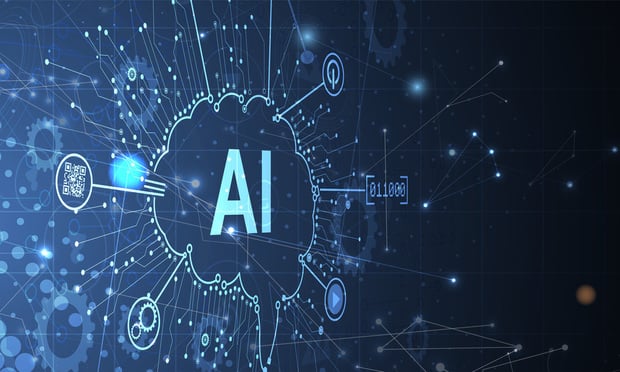Features

AI Poisoning: A Self Help Cybersecurity Option
A novel legal self-help technique to secure artificial intelligence data and programs is known as Poisoning AI. This technique involves modifying the AI algorithm to intentionally produce specific erroneous results.
Features

Artist Challenges Copyright Office Refusal to Register Award-Winning AI-Assisted Work
Copyright law has long struggled to keep pace with advances in technology, and the debate around the copyrightability of AI-assisted works is no exception. At issue is the human authorship requirement: the principle that a work must have a human author to be eligible for copyright protection. While the Copyright Office has previously cited this "bedrock requirement of copyright" to reject registrations, recent decisions have focused on the role of human authorship in the context of AI.
Features

Artist Challenges Copyright Office Refusal to Register AI-Assisted Work
While the Copyright Office has previously cited the "bedrock requirement of copyright" that that a work must have a human author to be eligible for copyright protection to reject registrations, recent decisions have focused on the role of human authorship in the context of AI.
Features

How Secure Is Your Firm's AI System?
What Law Firms Need to Know Before Trusting AI Systems with Confidential Information As artificial intelligence continues to revolutionize industries, the legal profession is no exception. Every authority agrees about the transformative impact AI is having on legal services. As law firms and corporate legal departments adopt AI technologies to streamline their practices, they must face the inevitable question: How secure are these AI systems?
Features

Generative AI and the 2024 Elections: Risks, Realities, and Lessons for Businesses
GenAI's ability to produce highly sophisticated and convincing content at a fraction of the previous cost has raised fears that it could amplify misinformation. The dissemination of fake audio, images and text could reshape how voters perceive candidates and parties. Businesses, too, face challenges in managing their reputations and navigating this new terrain of manipulated content.
Features

3 AI Bills in Congress for Employers to Track: Proposed Laws Target Automated Systems, Workplace Surveillance, and More
While much of the existing legal landscape on AI centers on broad, overarching principles, Congress has been considering bills that hone in on more specific issues like the workplace.
Features

How AI Is Changing Search
In this article, we'll find out how search is changing because of advanced AI systems, the complex algorithms that power them, the key SEO practices that still matter, and what these changes mean for B2B content marketing.
Features

The Impact of Automation on Critical Workflows for Legal Teams In E-Discovery
Automation is transforming industries across the board, and the legal sector is no exception. In the realm of e-discovery, automation is revolutionizing how legal teams manage their workflows. This article explores how automation impacts critical workflows for legal teams in e-discovery and provides valuable use cases and actionable tips to ensure that your e-discovery processes are positively impacted by automation.
Features

Harnessing AI for Efficiency and Growth
While AI presents valuable opportunities, the excitement around it can sometimes overshadow the need for proper data management and interpretation. Here's a balanced look at how AI can be used to drive efficiency and growth within your firm, along with some key considerations.
Features

Legislative Protections Against AI Voice Scams
A wide range of tools have been developed to perform vocal cloning, leading to vocal deepfakes becoming a common source of scams and misinformation. And these issues have only been exacerbated by a lack of appropriate laws and regulations to rein in the use of AI and protect an individual's right to their voice.
Need Help?
- Prefer an IP authenticated environment? Request a transition or call 800-756-8993.
- Need other assistance? email Customer Service or call 1-877-256-2472.
MOST POPULAR STORIES
- Use of Deferred Prosecution Agreements In White Collar InvestigationsThis article discusses the practical and policy reasons for the use of DPAs and NPAs in white-collar criminal investigations, and considers the NDAA's new reporting provision and its relationship with other efforts to enhance transparency in DOJ decision-making.Read More ›
- The DOJ's New Parameters for Evaluating Corporate Compliance ProgramsThe parameters set forth in the DOJ's memorandum have implications not only for the government's evaluation of compliance programs in the context of criminal charging decisions, but also for how defense counsel structure their conference-room advocacy seeking declinations or lesser sanctions in both criminal and civil investigations.Read More ›
- The DOJ's Corporate Enforcement Policy: One Year LaterThe DOJ's Criminal Division issued three declinations since the issuance of the revised CEP a year ago. Review of these cases gives insight into DOJ's implementation of the new policy in practice.Read More ›
- Don't Sleep On Prohibitions on the Assignability of LeasesAttorneys advising commercial tenants on commercial lease documents should not sleep on prohibitions or other limitations on their client's rights to assign or transfer their interests in the leasehold estate. Assignment and transfer provisions are just as important as the base rent or any default clauses, especially in the era where tenants are searching for increased flexibility to maneuver in the hybrid working environment where the future of in-person use of real estate remains unclear.Read More ›
- Developments in Distressed LendingRecently, in two separate cases, secured lenders have received, as part of their adequate protection package, the right to obtain principal paydowns during a bankruptcy case.Read More ›
